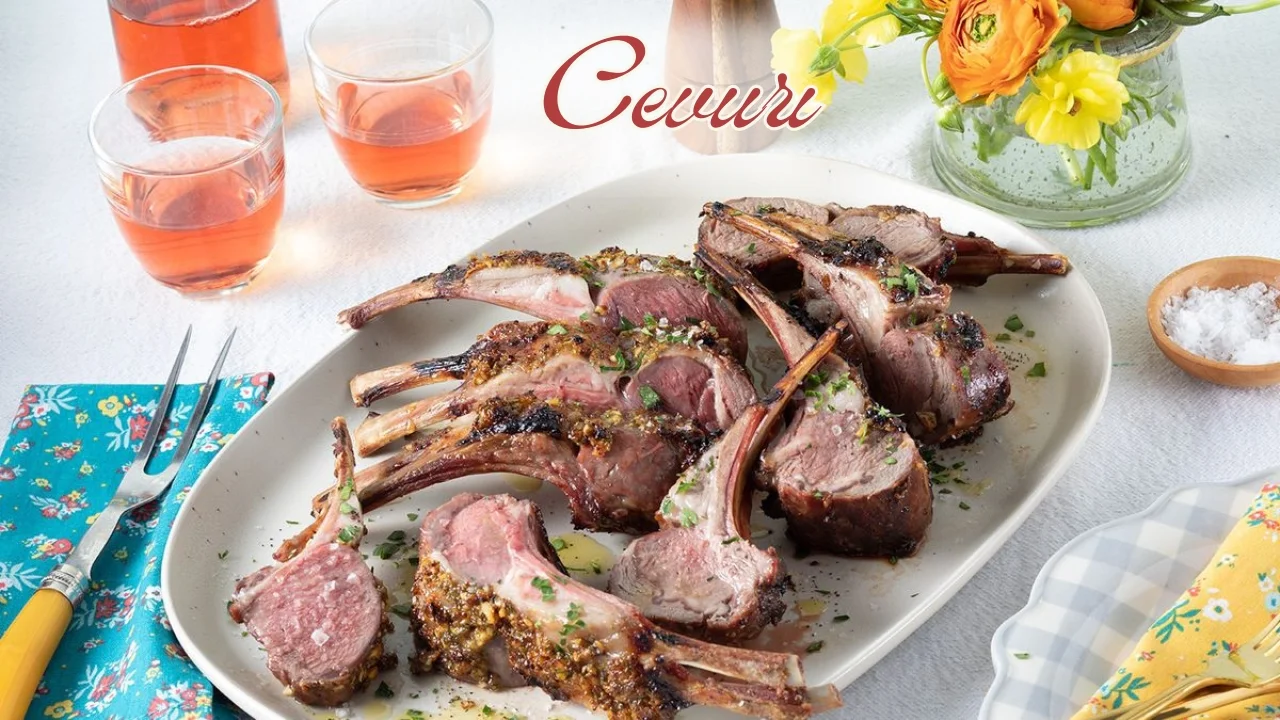Introduction
In the rich tapestry of Turkish cuisine, certain dishes stand out not just for their flavors but also for their deep cultural significance. One such dish is cevıırı, a traditional Turkish delicacy that has been enjoyed for centuries. Often referred to as Turkey’s raw meat dish, cevıırı is a testament to the country’s culinary heritage and regional variations. This article delves into the history, preparation, and cultural importance of cevıırı, offering a comprehensive look at this intriguing dish.
What is Cevıırı?
Cevıırı, pronounced as je-vee-ree, is a traditional Turkish dish made primarily from raw minced meat, typically lamb or beef. The dish is often seasoned with a blend of spices and herbs, creating a unique and rich flavor profile. Unlike many other raw meat dishes from around the world, cevıırı is characterized by its combination of freshness and spices, which helps to balance the dish’s raw nature.
Ingredients:
- Raw minced meat (lamb or beef)
- Onions
- Garlic
- Parsley
- Paprika
- Black pepper
- Salt
- Optional: bulgur or rice
Preparation: The meat is finely minced and mixed with the chopped onions, garlic, and spices. It is then allowed to rest for a short period to let the flavors meld. In some variations, bulgur or rice may be added to the mixture, adding texture and flavor.
Historical Background
The origins of cevıırı are somewhat obscure, but it is believed to date back to the Ottoman Empire era. This period was marked by a rich culinary tradition, blending influences from various cultures that the empire encountered. Cevıırı, like many traditional dishes, likely evolved from the need to preserve and utilize fresh meat in an era before refrigeration.
Historically, raw meat dishes were common in various cultures, particularly in regions where meat was a staple of the diet. In Turkey, cevıırı became a popular choice due to its simplicity and the availability of high-quality meat. The dish reflects a broader tradition of raw meat preparations found across the Middle East and Central Asia.
Cultural Significance
Cevıırı is more than just a dish; it’s a cultural symbol in Turkey. It reflects the country’s rich culinary traditions and the importance of meat in Turkish cuisine. The preparation and consumption of cevıırı are often associated with special occasions and gatherings, particularly in rural areas where traditional practices are more prevalent.
In Turkish culture, food is a communal experience, and cevıırı is often enjoyed in a social setting. It is typically served with a side of fresh bread, vegetables, and sometimes pickles. The dish is also commonly accompanied by a glass of ayran, a traditional Turkish yogurt drink.
Regional Variations: There are several regional variations of cevıırı, each with its own unique twist. For instance, in some areas, the dish might be served with additional garnishes or spices. In other regions, cevıırı might include different types of meat or accompaniments, reflecting local tastes and traditions.
Modern-Day Cevıırı
In contemporary Turkey, cevıırı continues to be a beloved dish, although its preparation and consumption have evolved. With advancements in food safety and refrigeration, modern cevıırı is often prepared with careful attention to hygiene and quality. Restaurants and eateries that specialize in traditional Turkish cuisine frequently offer cevıırı on their menus, showcasing this classic dish to new generations of diners.
Health and Safety: While cevıırı is enjoyed by many, it’s important to consider food safety when consuming raw meat. Ensuring that the meat is sourced from reputable suppliers and prepared under strict hygienic conditions is crucial. Modern practices emphasize the importance of proper handling and storage to minimize health risks.
Conclusion
Cevıırı is a fascinating example of Turkey’s rich culinary heritage, embodying a tradition that spans centuries. Its blend of raw meat and spices not only highlights the ingenuity of Turkish cuisine but also reflects the cultural values associated with communal eating and celebration. Whether enjoyed in a traditional setting or modern restaurant, cevıırı remains a testament to Turkey’s enduring culinary traditions.
FAQs
1. Is cevıırı safe to eat? Cevıırı can be safe if prepared with high-quality meat and under strict hygienic conditions. Ensure that the meat is fresh and sourced from a reputable supplier.
2. Can I make cevıırı with beef instead of lamb? Yes, cevıırı can be made with both beef and lamb. The choice of meat often depends on personal preference and regional variations.
3. What are common side dishes served with cevıırı? Cevıırı is typically served with fresh bread, vegetables, pickles, and sometimes a side of ayran, a Turkish yogurt drink.
4. Are there any vegetarian alternatives to cevıırı? While cevıırı is traditionally made with meat, some variations might include bulgur or rice mixed with vegetables and spices. However, a true vegetarian alternative would be different from the traditional recipe.
5. How has cevıırı evolved in modern times? Modern cevıırı places a greater emphasis on food safety and hygiene. It is also commonly found in restaurants that specialize in traditional Turkish cuisine, showcasing its continued relevance and popularity.








